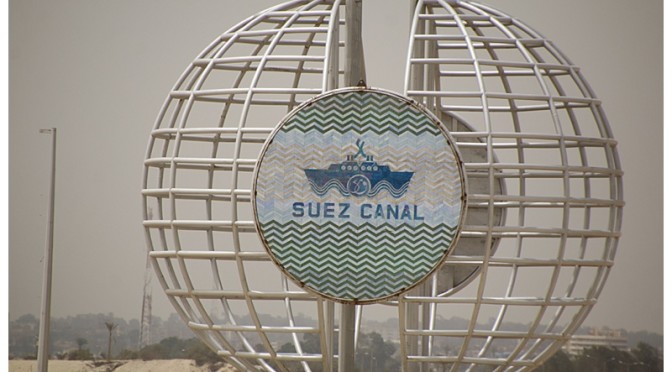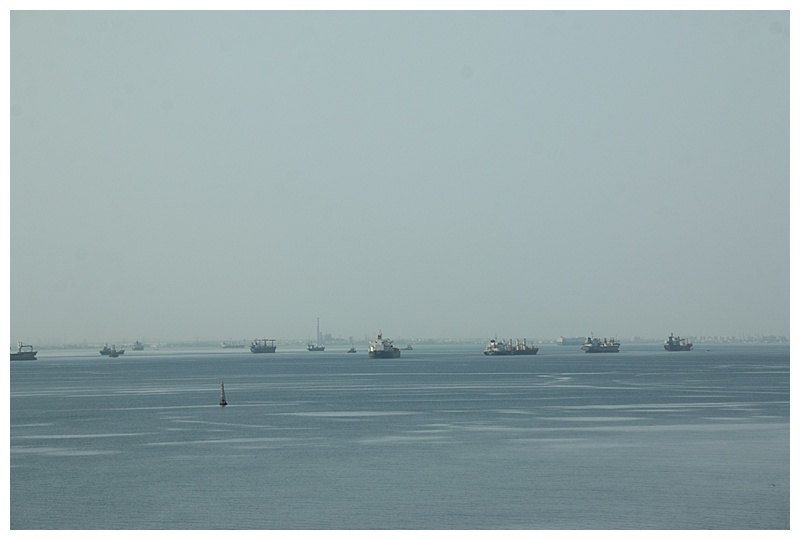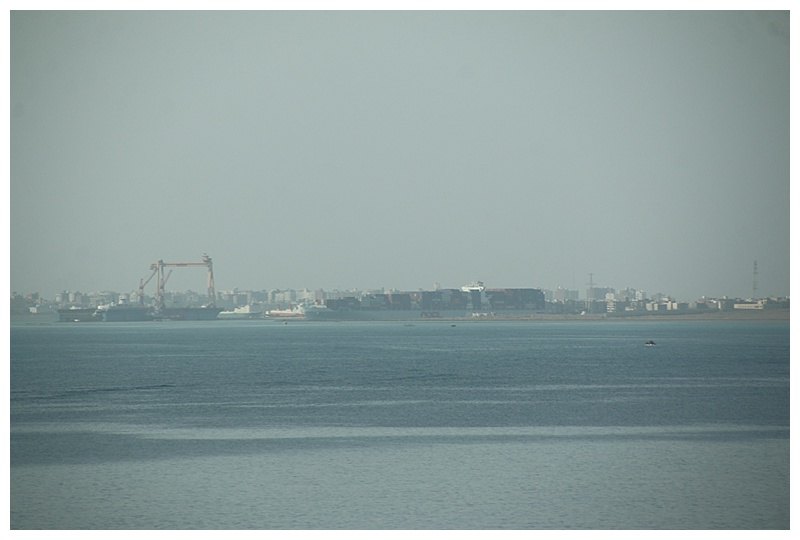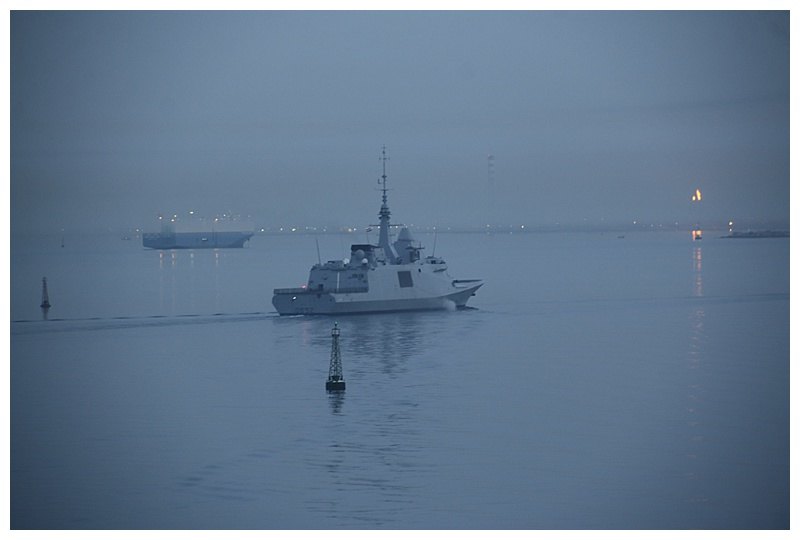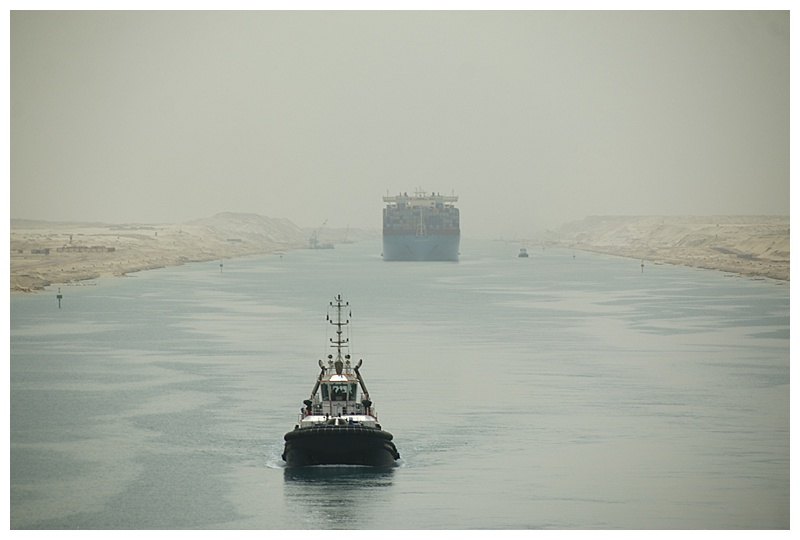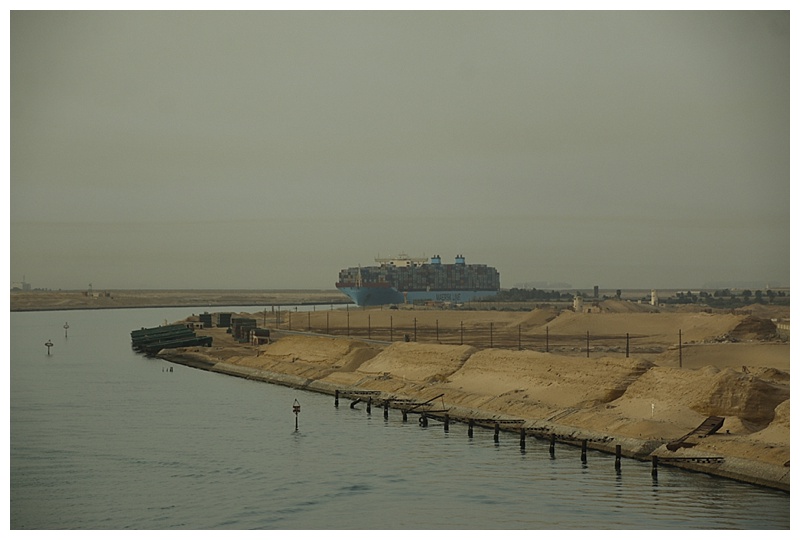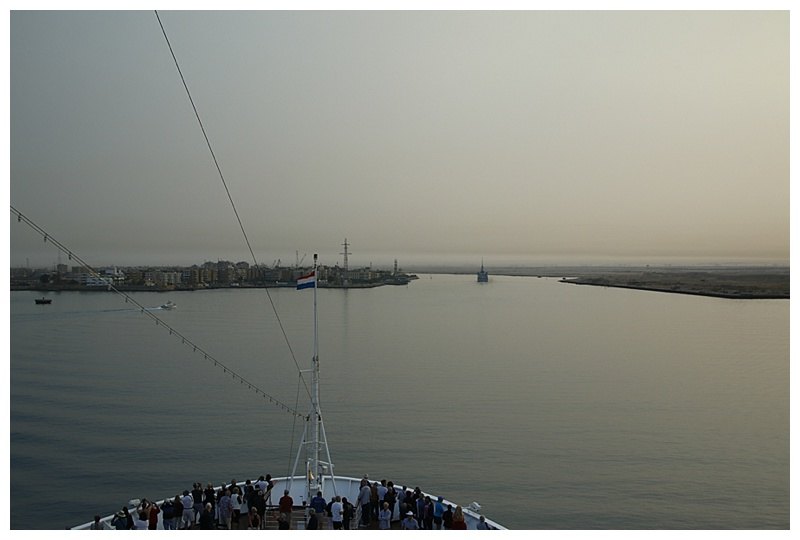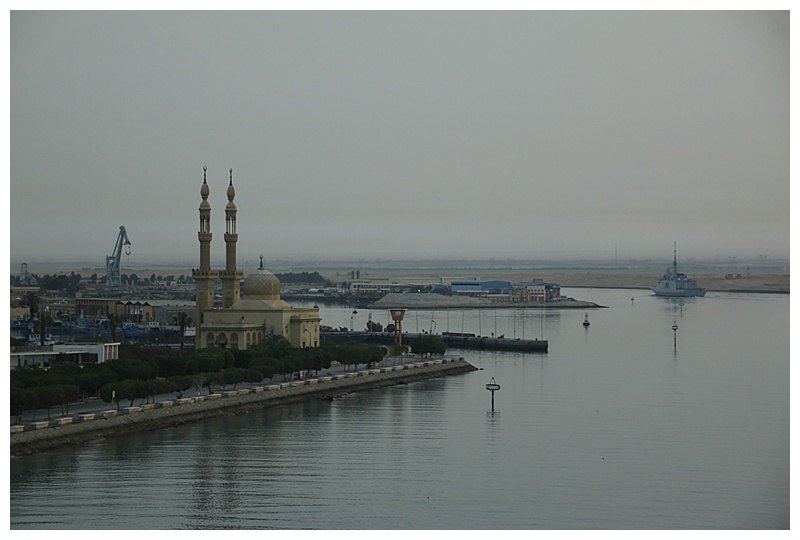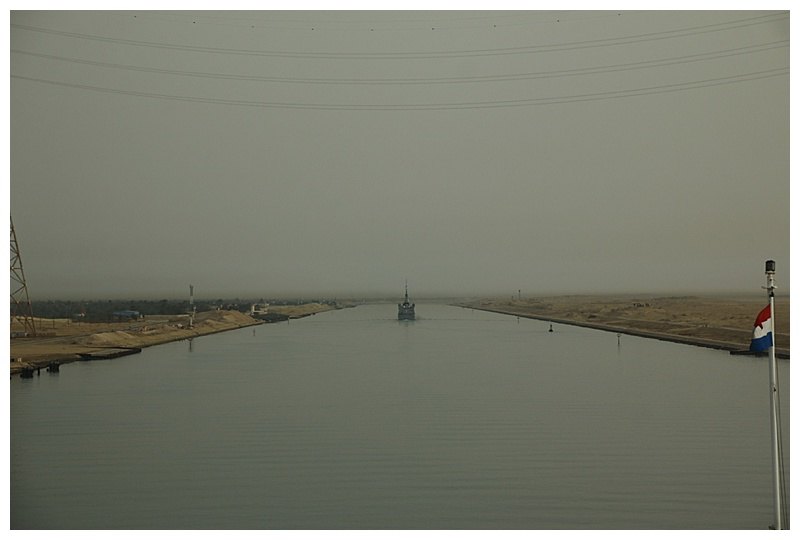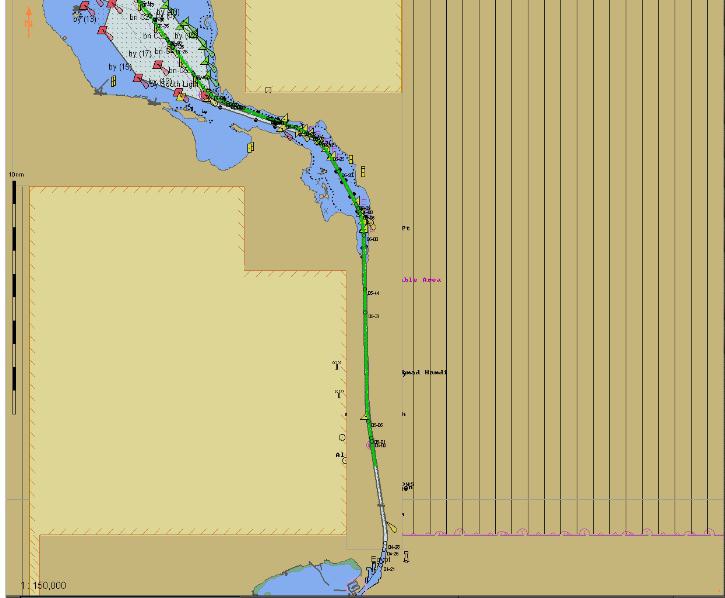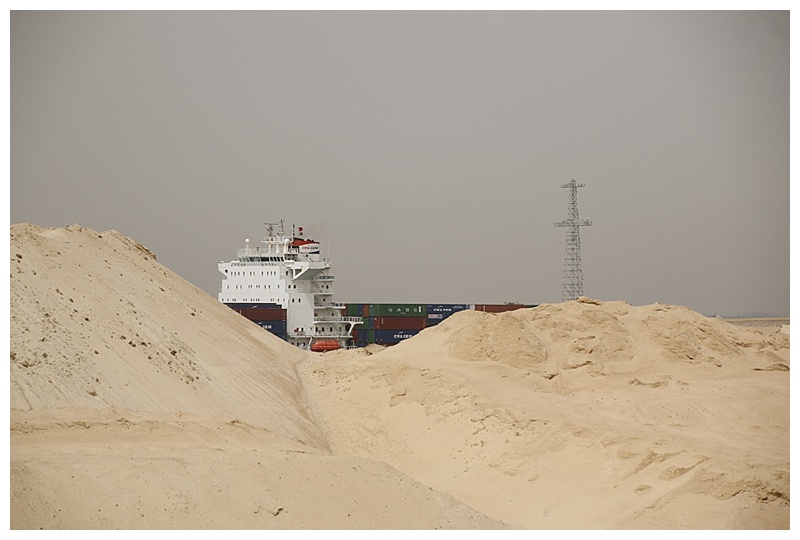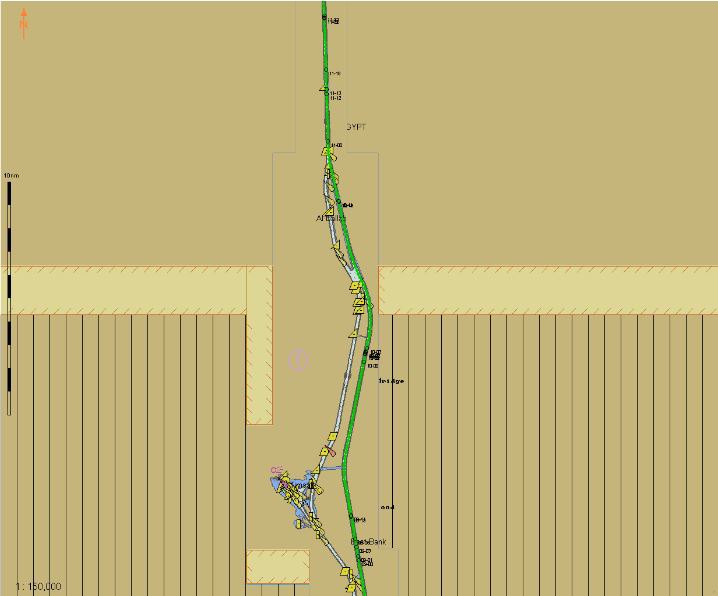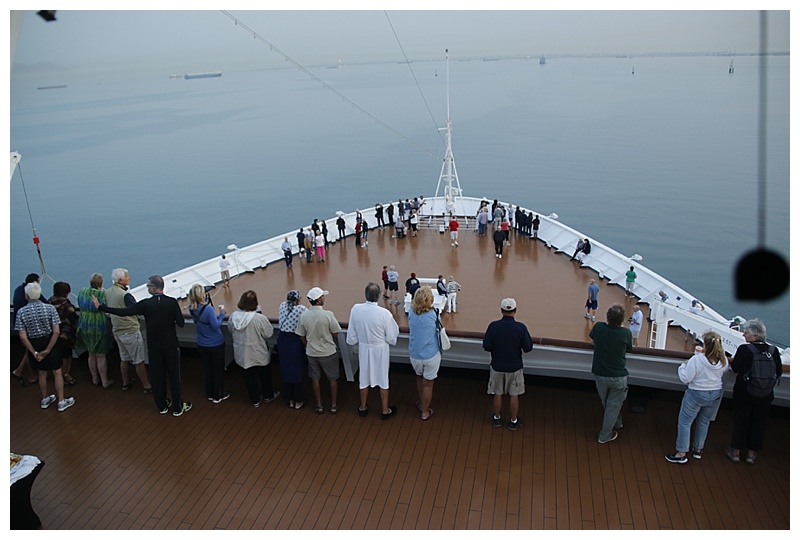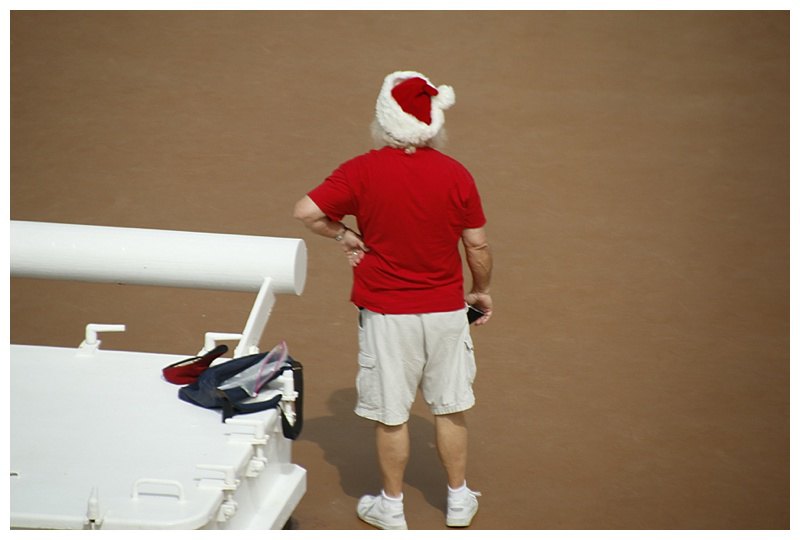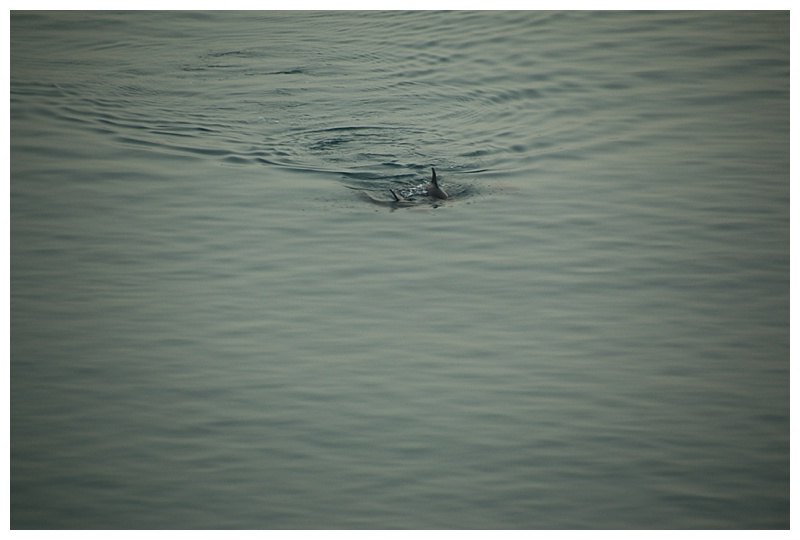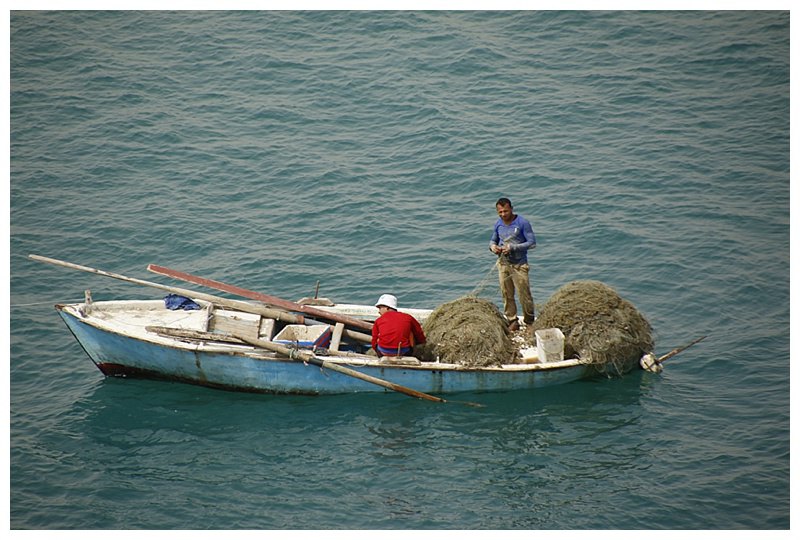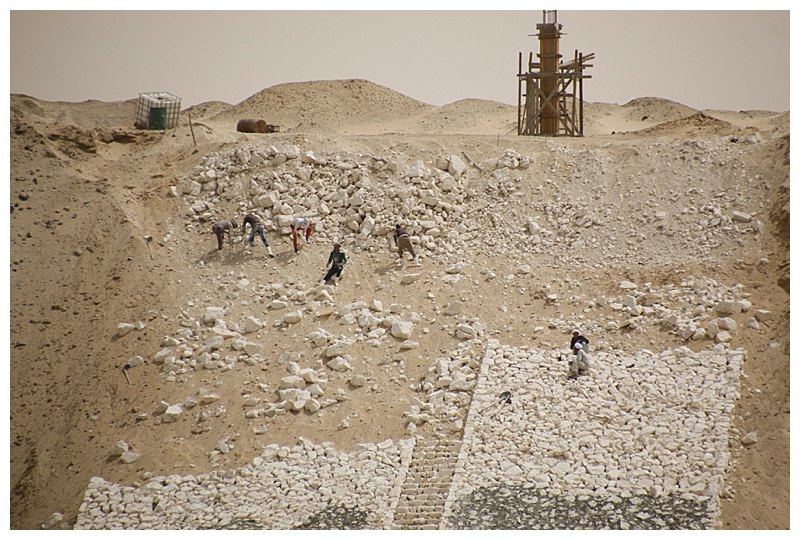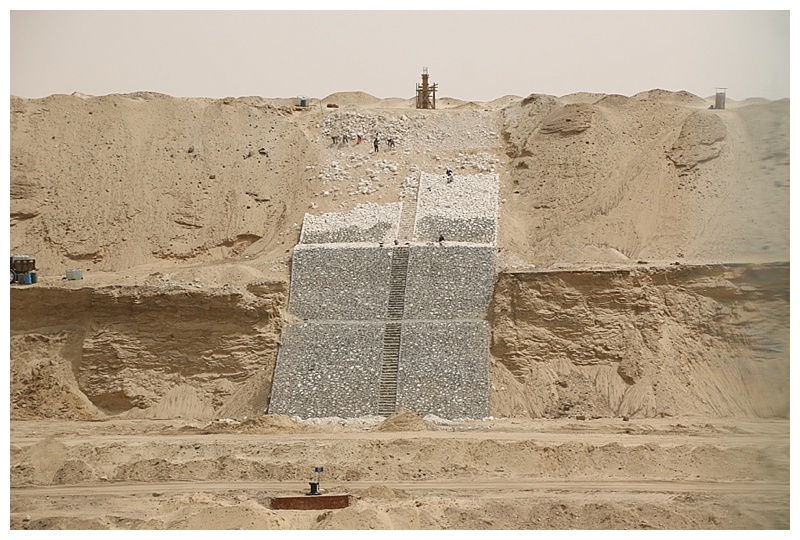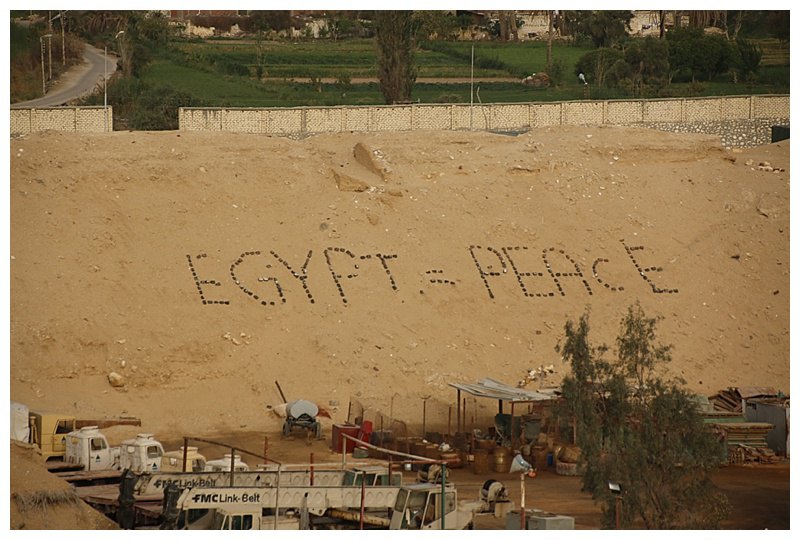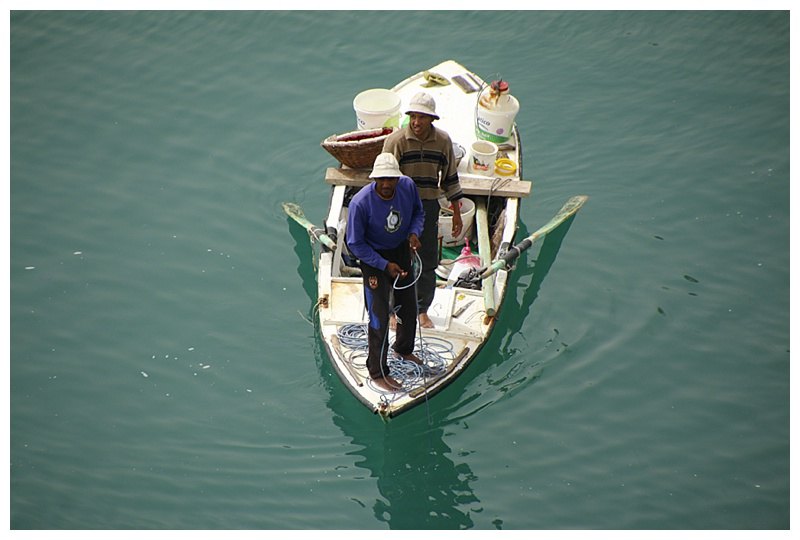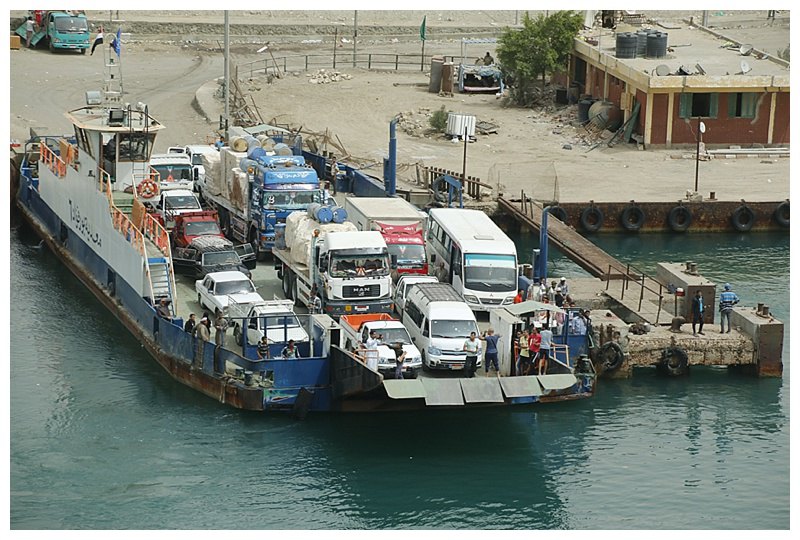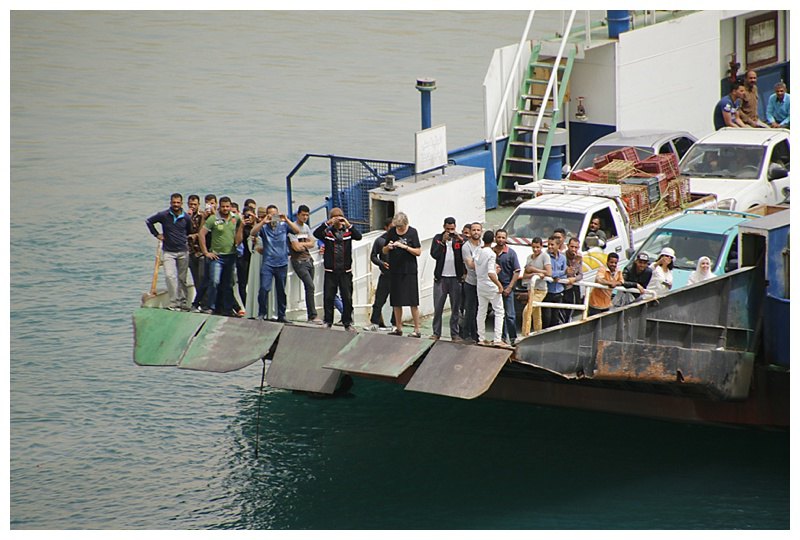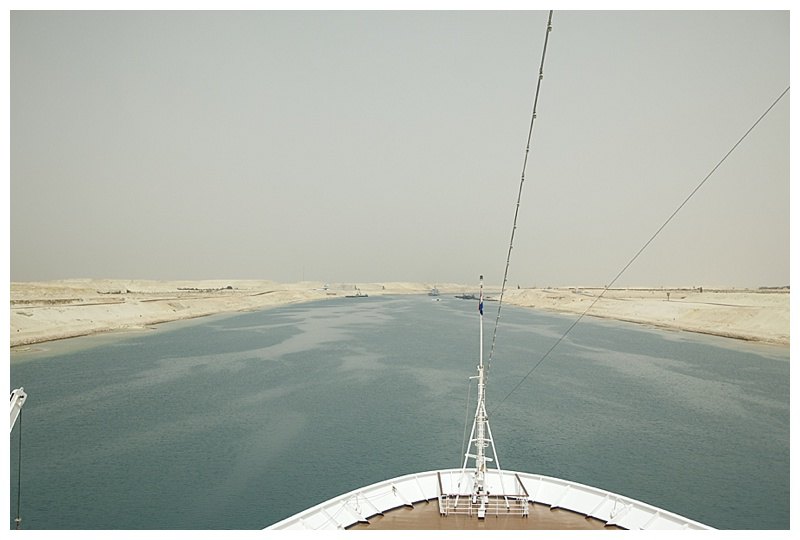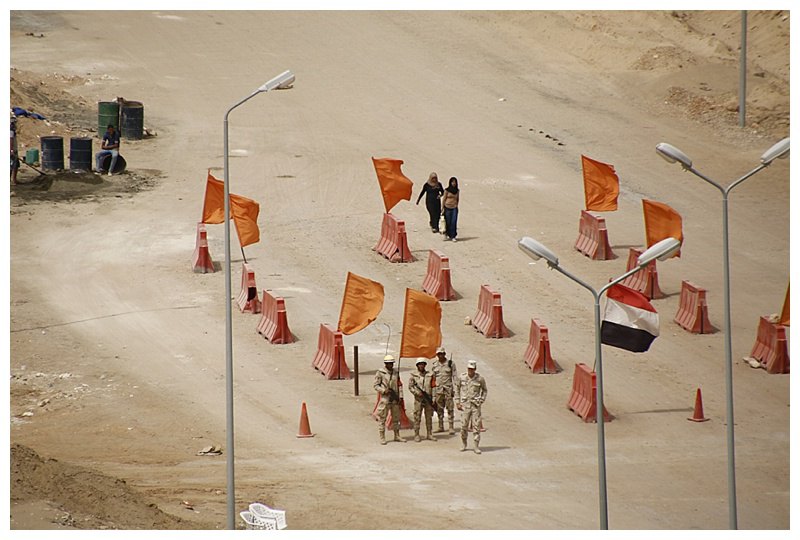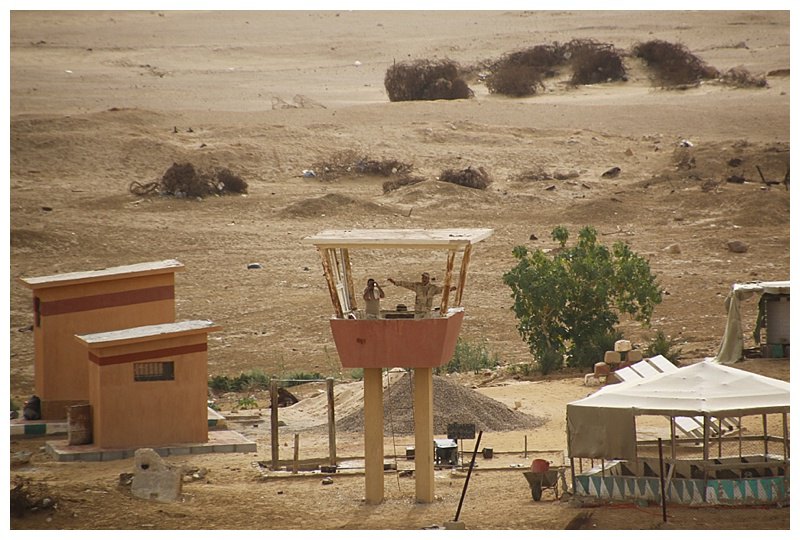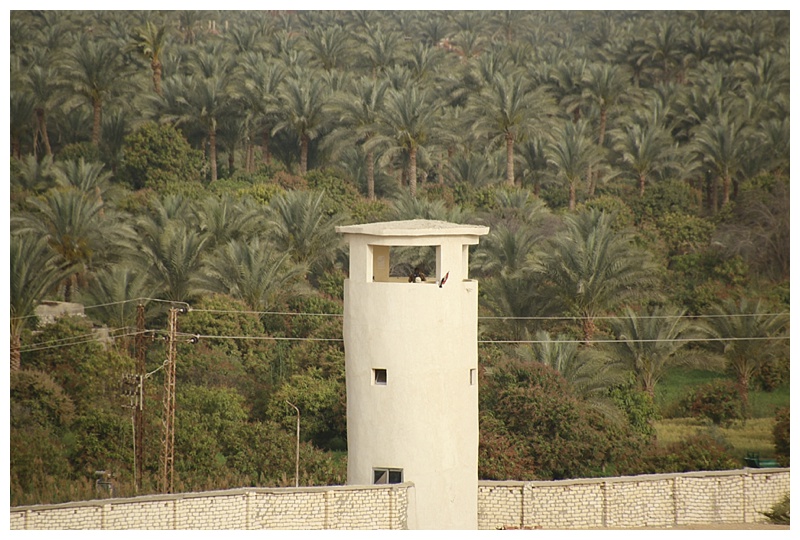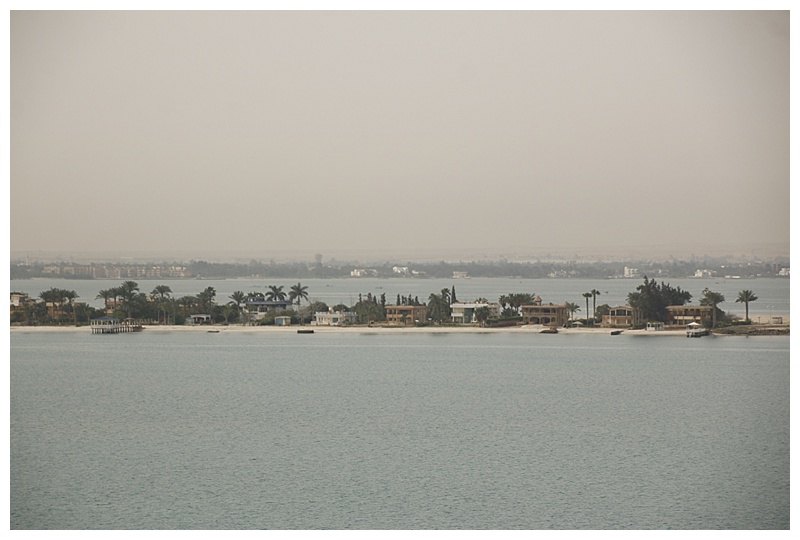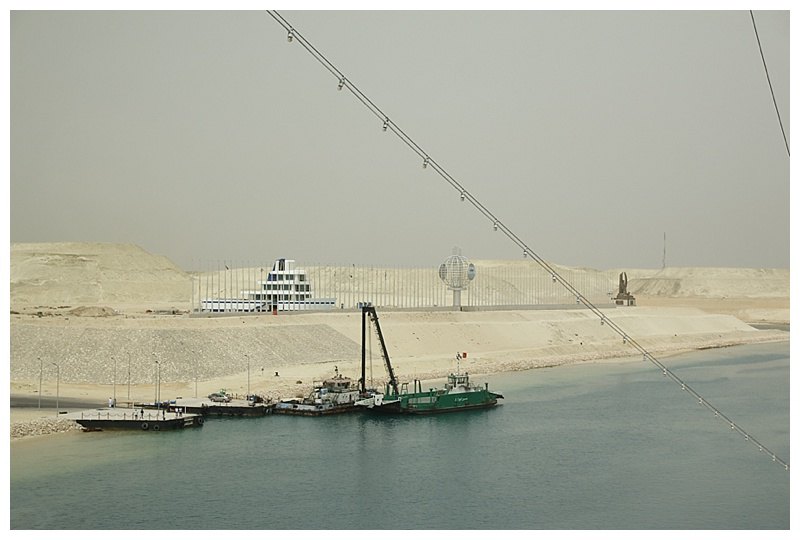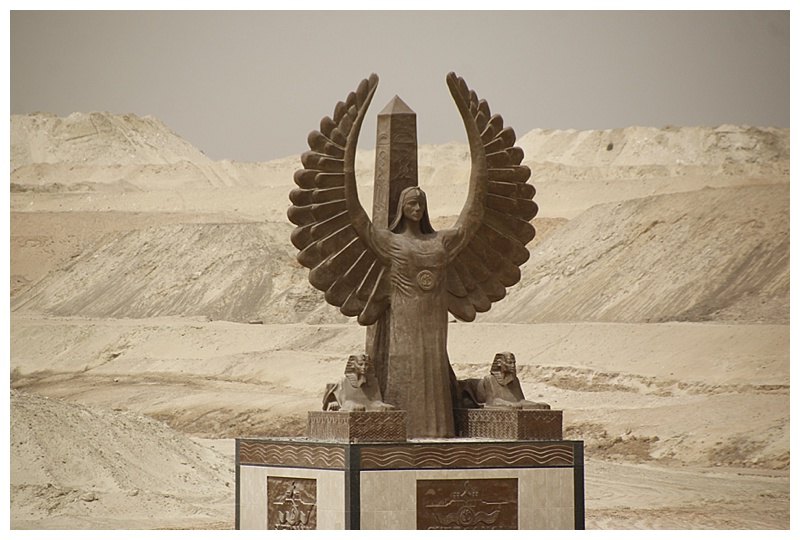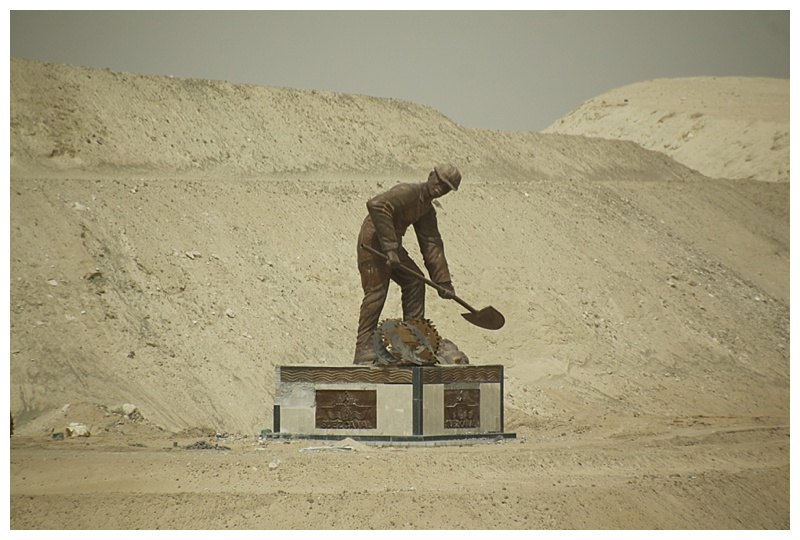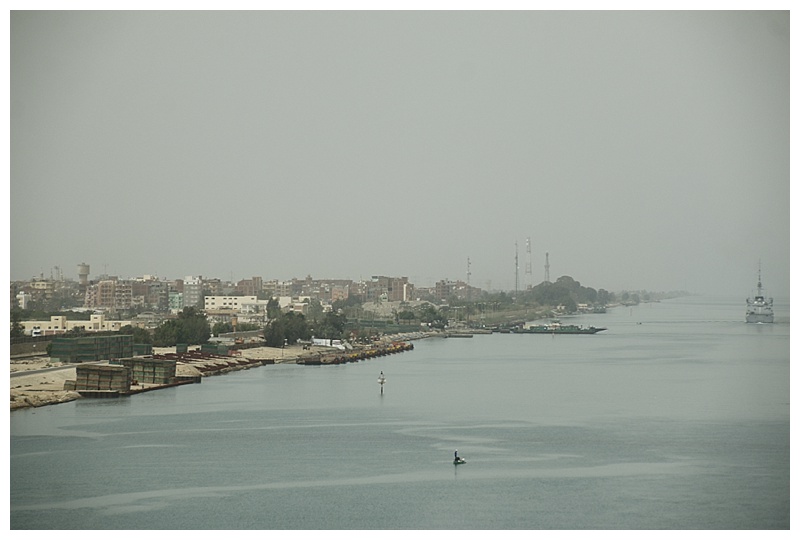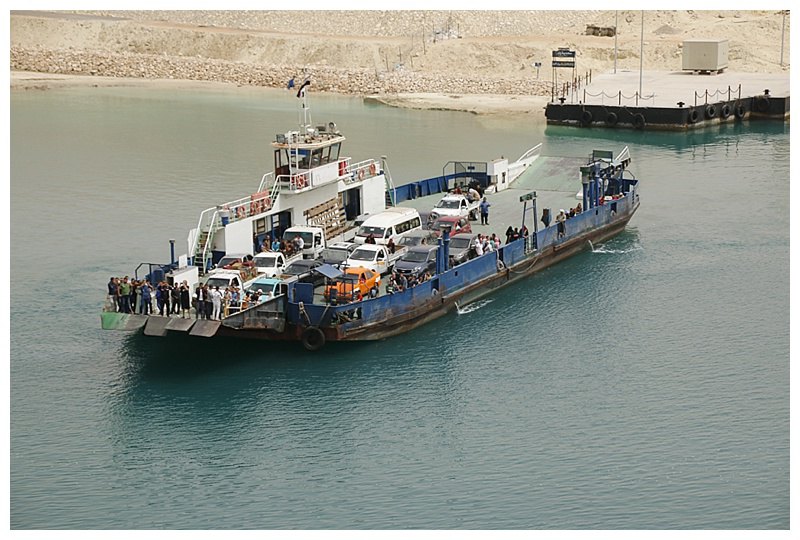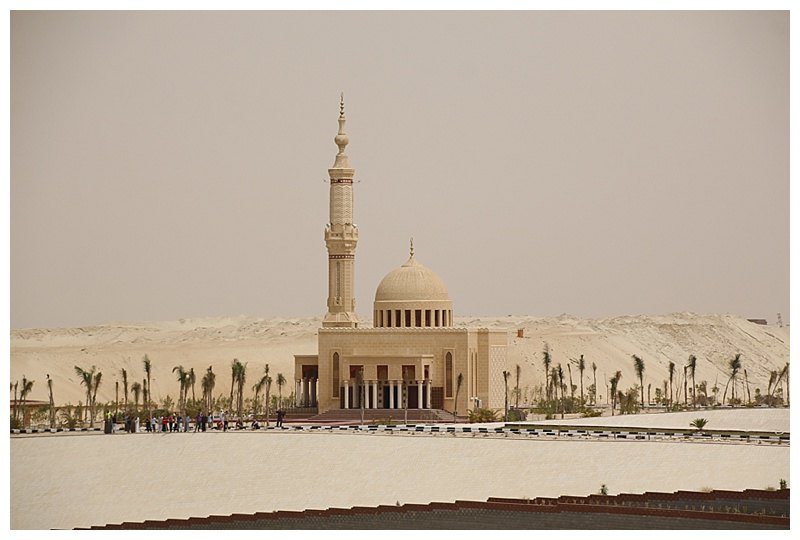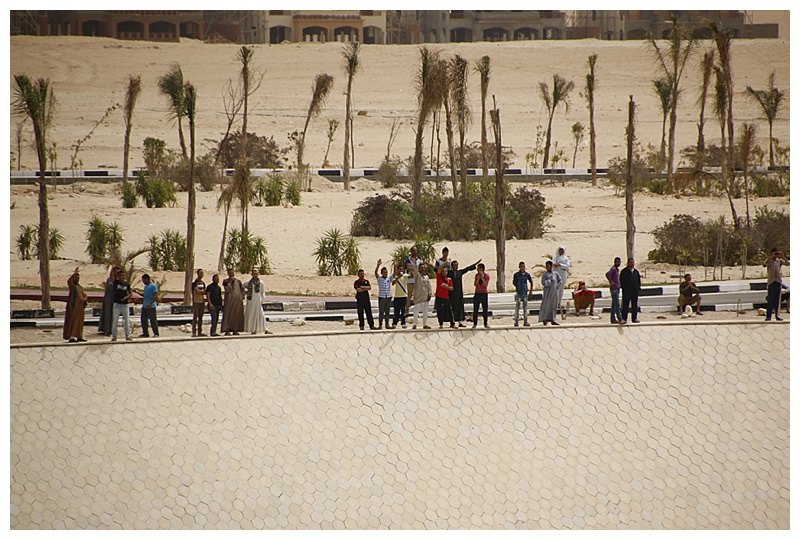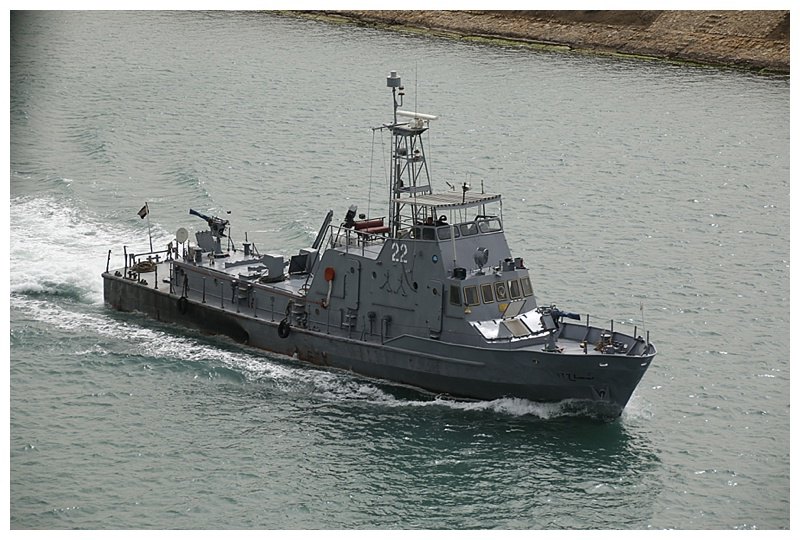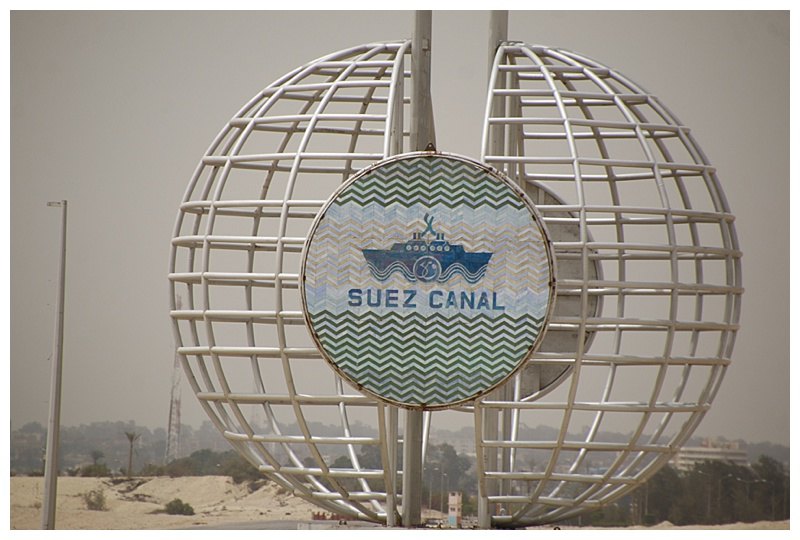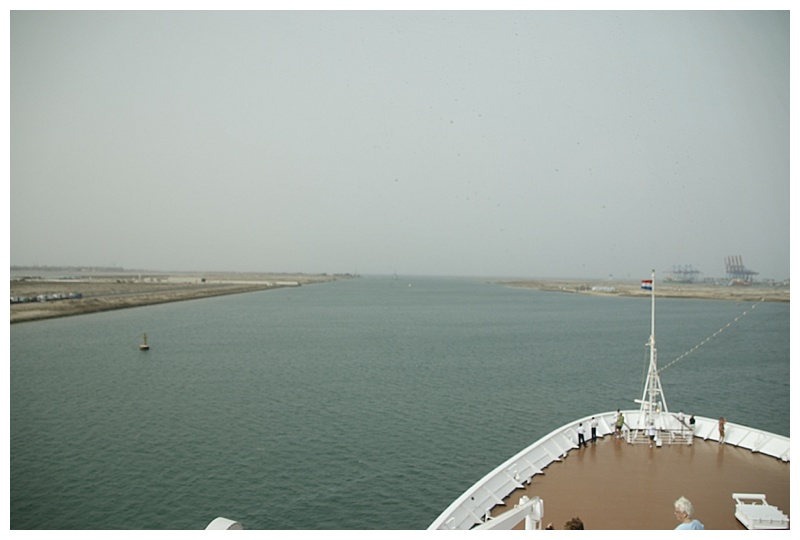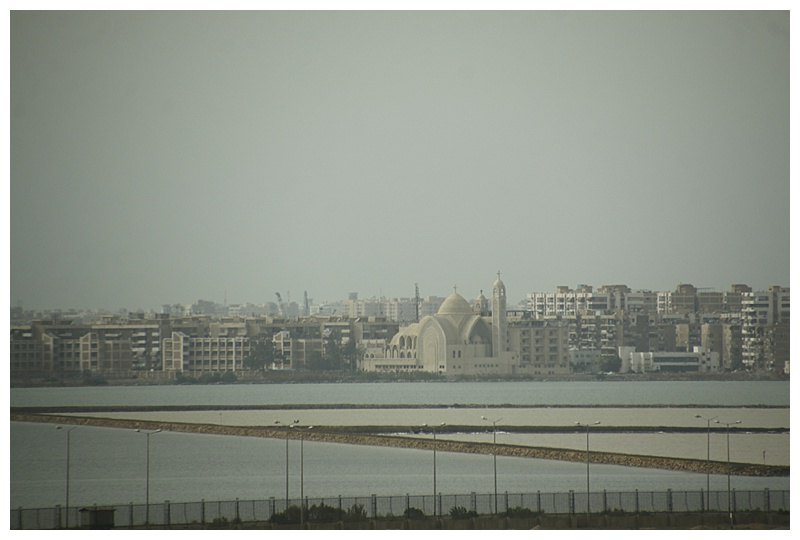I last posted as we lay at one of many anchorages to the south of Suez and the entrance to the canal. Having registered at Latitude 29° 42’N, we then sailed north to our anchorage. We then had a plethora of inspectors, health officials and heaven knows who before we were deemed acceptable to transit the canal. As dusk fell, the southbound convoy began to appear, rounding the last turn of the canal and entering the buoyed channel, passing the anchored ships and making for the Red Sea.
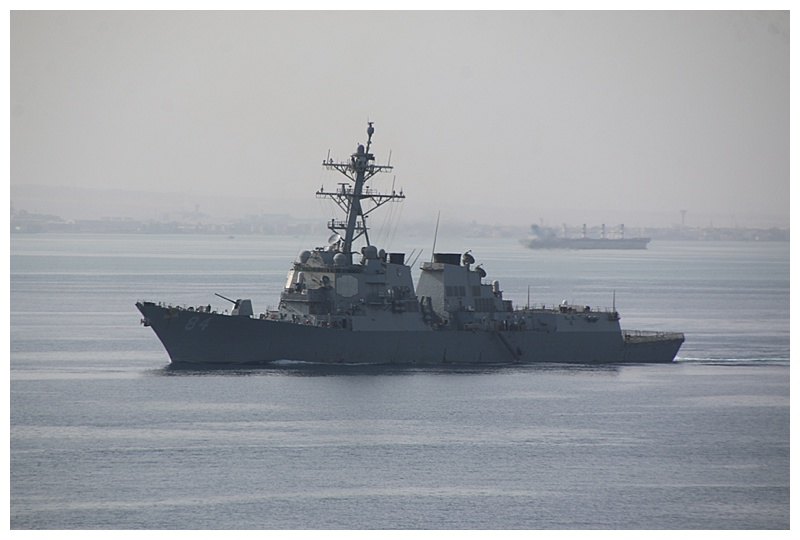
An Arleigh-Burke class destroyer, possibly the USS Bulkeley, leads the southbound convoy, on her way to the Red Sea (and beyond)?
During the late evening and night, the anchorage slowly filled as other vessels arrived and went through the same inspection process.
There were going to be 22 of us in the northbound convoy; we, having been assigned one of the most northerly (and therefore closest) anchorages, could assume we would be either ‘lead’ vessel or close to it. It transpired that were going to be N° 2, N° 1 being a French ‘Aquitaine’ class ant-submarine frigate, the “Provence”. Interestingly, N° 3 was going to be one of the largest container ships in the world, one of Maersk Lines ‘Triple E’ class, the “Maersk Mac-Kinney Moller”, capable of carrying 20, 000 containers she was loaded with a mere 17,000. She is 400 metres long and 50 metres wide and is a veritable monster.
The bedside phone harshly woke me at 4 a.m., this in preparation for a 5 a.m. weighing of the anchor and jockeying for position to ensure we were in the correct order for transit in the convoy. Having briefed the Bridge-Team and ready in all respects, we began weighing anchor while waiting for the pilot. Dawn was breaking as the French frigate passed on our port side, we had been ‘hovering’ on joystick, waiting for the opportunity to slip-in astern of her and, having let her pass, we switched to conventional control, adjusting the rpm and switching to hand-steering; it was going to be a long day………
Each ship travels about 1½ miles between each other, it would seem an overly large distance, however, in ‘ship’ terms, it isn’t. The gap between each ship gives any one of them, should matters go awry, the opportunity to stop, should there be a need to do so. Matching the frigate’s speed of 10 knots, we followed her into the first turn, astern of us, the ‘Maersk’ ship had slipped in and behind her another 19 were in the process of getting in order; the convoy would stretch for over 20 miles, or 32 kilometres. Similarly, to the north off Port Said, the southbound convoy was doing the same, 20 ships in this one.
The canal has seen some massive (and expensive) expansion. New channels have been dug out of the desert, this to overcome the necessity for north and south convoys to anchor in the Bitter Lakes, the only expanse of water wide enough to allow passing, or being restricted to 1 north and 1 south bound every 12 hours. Last year, having dashed from Aqaba to Suez, I just managed to register for a convoy, had I not, we would have missed our transit by a day and lost our Israeli ports; this because, while expansion was still ongoing, there was only 1 convoy a day, north or south, but not both. Had we arrived as scheduled on our itinerary, we would have had to wait another day to travel north.
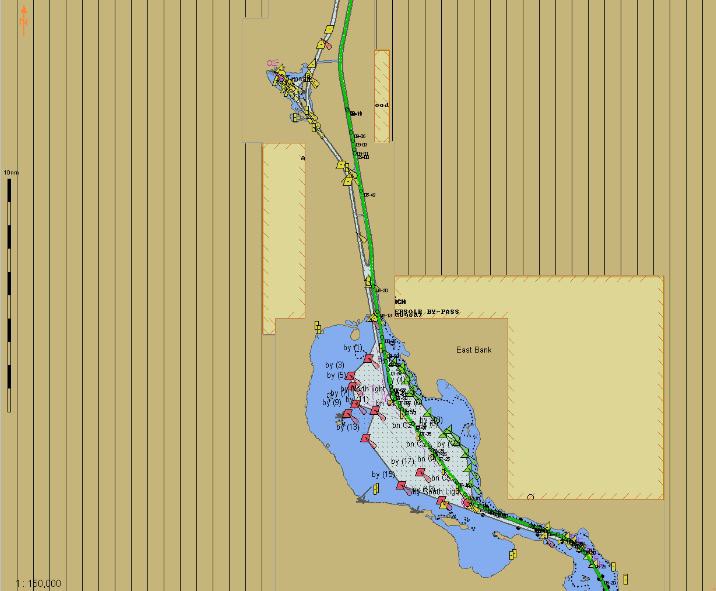
Bitter Lakes to Ismailia, (top). The new channel is to the right, the original left. The green is our track, the south convoy was passing in the opposite direction in the (old) left channel
Anyway, no such challenges this time and so, with decks packed with guests, able to access tables lined with fresh-baked pastries and litres of coffee and tea in convenient spots, we made the first turn and past Suez itself. The contrast between the west and east banks of the canal are astonishing; to the west, verdant pastures and civilisation, to the east, sand, miles and miles of it.
We were going to use the ‘new’ canal channels on our transit north. The idea being that, although both the southern and northern ‘1/3’ are only capable of one-way traffic, the middle ‘1/3’ is split, 2-channels, the east for north-going and the west for south-going. The convoy speed is timed so that the last southbound ship is in the west channel as the 1st northbound is leaving the east channel and can enter the one-way section; complicated, but it works. We moved into our convoy at 5 a.m. and reached Port Said at 5 p.m., so a 12-hour transit and (I know you’re wondering 
Hopefully you have the gist of it now, (I didn’t realise how challenging it would be), as always, the camera was on the Bridge; I will try to describe it with the aid of photos.
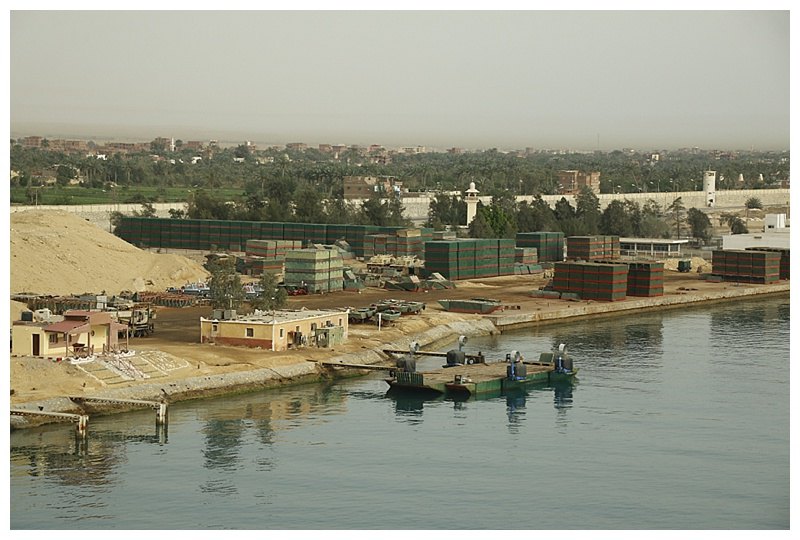
The banks are heavily militarised; pontoon bridges, watch-towers, barracks. Here is a stack of read-to-go bridge-building pontoons.
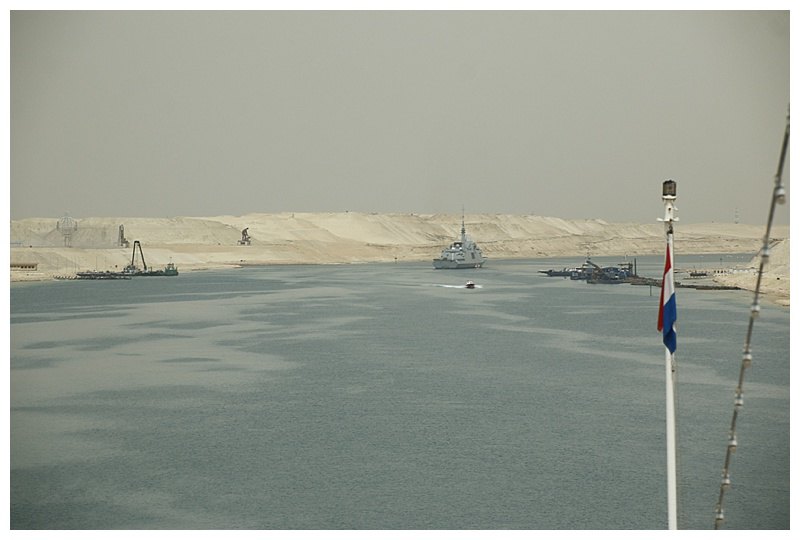
Our friend “Provence” ahead and work in progress, building a tunnel under the canal, this will take traffic from an overflow new town being built near Ismailia.
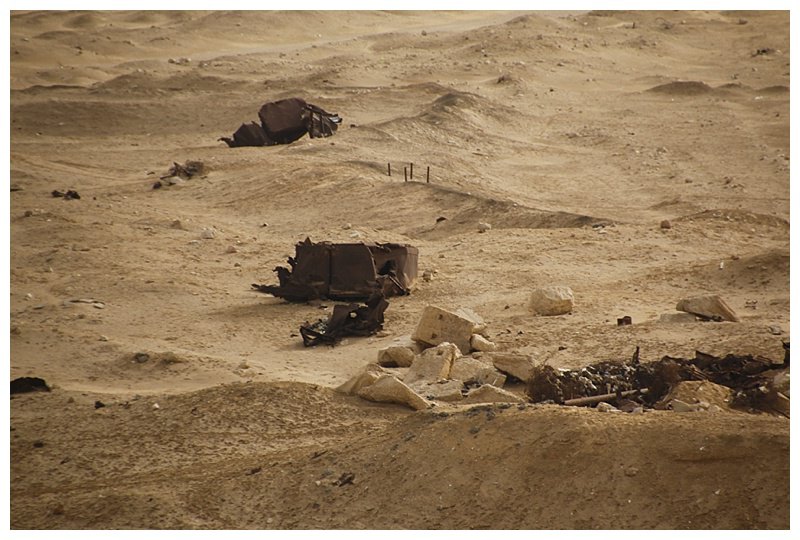
Rusting hulks are a remnant of the 6-day war, the Israelis reached the canal with their tanks. The eastern bank is littered with such items.
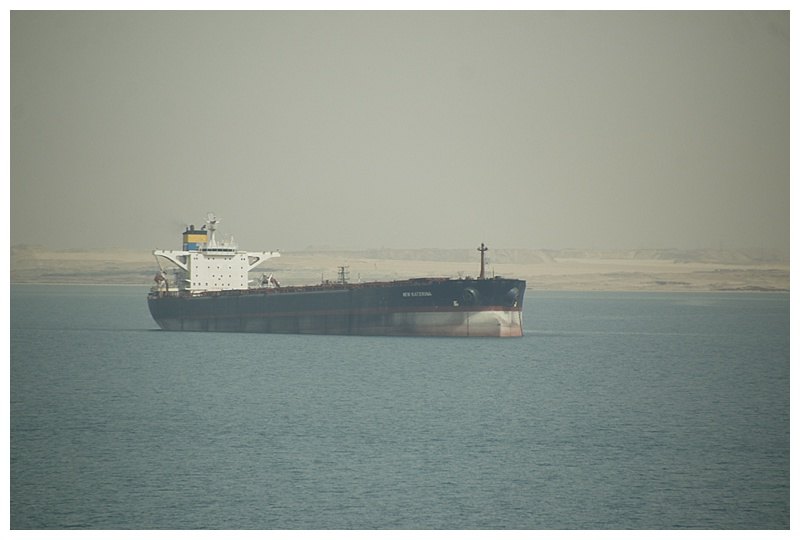
Anchored in the Bitter Lakes, this bulk-carrier with iron ore as cargo, had a steering failure and ran aground. Her cargo was discharged into another ship,brought in especially for the task (see next). Her steering will be repaired, the cargo ship will come back alongside and put her cargo back into the bulk-carrier.
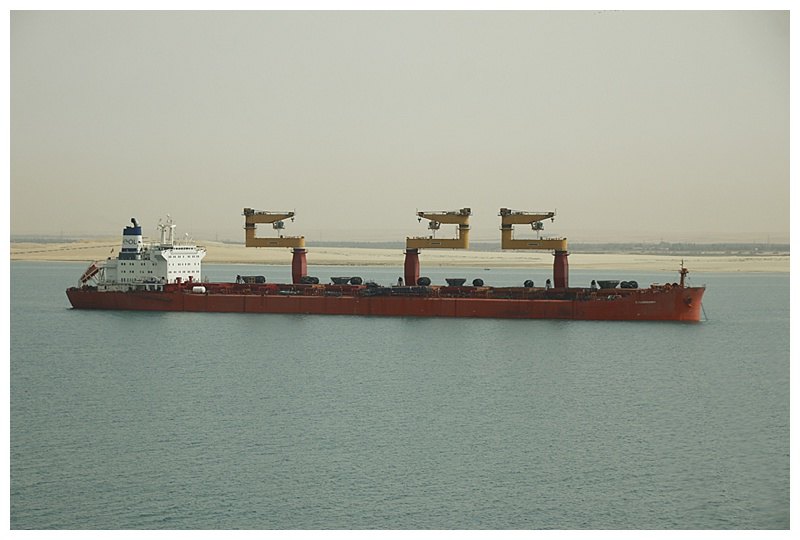
Waiting, loaded with the iron ore which it took out of the bulk-carrier, (using big grabs attached to those 3 cranes)
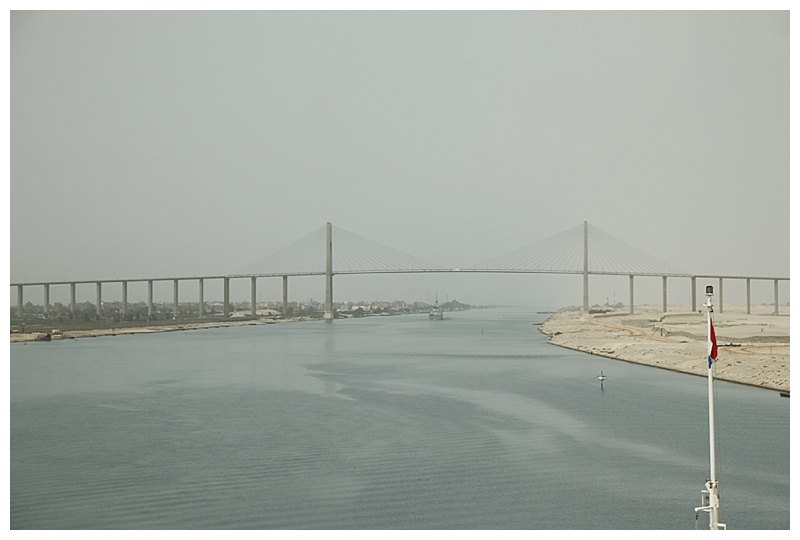
Approaching the “Freedom” bridge near Al Qantara, it has never carried traffic, concerns about terrorism and not being able to control crossing, the ferries are used instead.
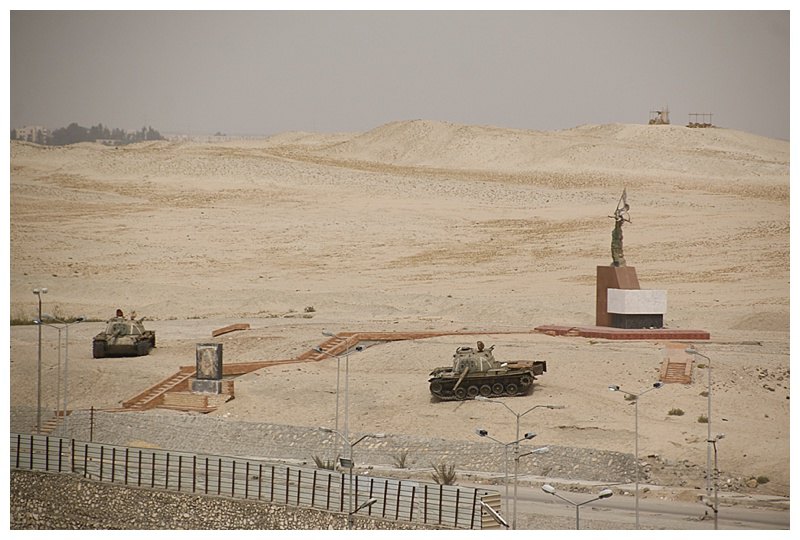
Another memorial, however, the pilot told me these were Israeli tanks, left here after the war, they look Russian-made to me????
I write from Haifa, having arrived here early morning, most guests, including K1, K2 and Ivana are off to tour Nazareth, the Sea of Galilee and the surrounding area. It’s a Saturday, the shops are closed! 
